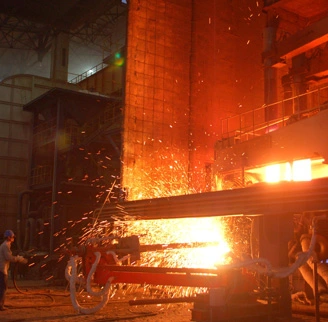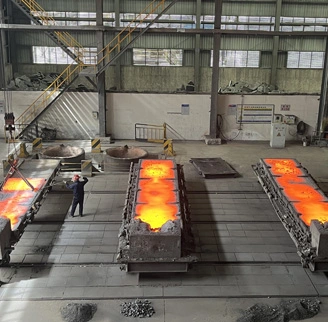In the realm of metal smelting, the electric arc furnace EAF is pivotal in the production of steel and various other metals. The choice between DC electric arc furnace (EAF) and AC electric arc furnace (EAF) is a crucial decision, each offering distinct advantages. This blog delves into the comparative advantages of DC and AC electric arc furnace (EAF), shedding light on their respective performances in different aspects of metal production. Understanding the advantages and disadvantages of electric arc furnace systems can help manufacturers choose the right technology for their specific needs.
When comparing ladle furnace vs electric arc furnace, it’s clear that the latter offers significant benefits in terms of speed and efficiency. A key point in the ladle furnace vs electric arc furnace debate is that electric arc furnace types can melt scrap metal faster, making them ideal for recycling operations. The electric arc furnace advantages make it a preferred choice in modern steelmaking, especially in regions focusing on sustainability and innovation. In the ladle furnace vs electric arc furnace discussion, the electric arc furnace often emerges as the superior choice for contemporary steel production.
DC Electric Arc Furnace (EAF) Advantages
Enhanced Energy Efficiency
The DC electric arc furnace boasts superior energy efficiency compared to their AC counterparts. The stability and controllability of direct current enable more effective energy transfer to the furnace charge, thereby elevating the overall energy efficiency of the entire furnace operation.
Precision Temperature Control
The ability of DC electric arc furnaces to precisely control internal temperatures is a key advantage, especially in processes that demand stringent temperature requirements. This precise temperature control contributes to the production of high-quality metal products.
Reduced Electrode Wear
DC electric arc furnaces exhibit lower electrode wear compared to AC furnaces. This reduction in wear translates to lower maintenance costs, an extended lifespan of equipment, and overall economic benefits over prolonged operational periods.
AC Electric Arc Furnace (EAF) Advantages
Lower Initial Cost
One of the primary AC Electric Arc Furnace (EAF) Advantages is their relatively lower initial cost. AC electric arc furnaces (EAFs) are generally more cost-effective to construct and maintain. In situations where cost is a critical factor, AC electric arc furnaces (EAFs) may present a more economical choice.
Production Flexibility
The AC electric arc furnace (EAF) advantages include energy efficiency and flexibility in production methods. AC electric arc furnaces find application in the smelting of various metals, including iron, steel, and alloys. The inherent flexibility of AC electric arc furnaces allows production lines to adapt easily to different metal smelting requirements. The AC electric arc furnace stands out as a versatile and efficient choice for modern metallurgical processes.
Simpler Start-up and Shutdown Operations
Compared to DC electric arc furnaces, AC electric arc furnaces (EAFs) have simpler start-up and shutdown procedures. This operational simplicity of AC electric arc furnaces facilitates easier control and management of production lines, particularly in scenarios where frequent start-up and shutdown are necessary. The ease of handling AC electric arc furnaces makes them a preferred choice in industries requiring flexible and efficient operations.
In conclusion, the choice between DC and AC electric arc furnaces depends on specific production needs and technological requirements. DC furnaces excel in energy efficiency, temperature control, and electrode wear reduction, making them ideal for applications that prioritize these aspects. On the other hand, AC electric arc furnaces (EAFs) offer cost-effectiveness, production flexibility, and simplified operational procedures. Understanding the advantages and suitable scenarios for each type is crucial for optimizing the smelting process and achieving desired outcomes in metal production.
Zhao Lianggang
Mr. Zhao, a graduate of Shaanxi Normal University, is an expert in metallurgical and steel equipment. With a robust knowledge of EAF, LF, VD/VOD, CCM, and related processes, he possesses a deep understanding of industry trends and customer needs. As a co-founder of CHNZBTECH, he leads the company's international strategy, expanding operations into over 20 countries across the Middle East, Southeast Asia, Africa, and South America. By merging his metallurgical expertise with global market insights, he has driven significant overseas growth and solidified the company's competitive position in the international metallurgical equipment industry.
 back homepage
back homepage

 EN
EN
 fr
fr  ar
ar  fa
fa 












